19 years ago today, the Kyoto Protocol went into effect after ratification by Russia. It commits state parties to reduce greenhouse gas emissions, based on the scientific consensus that global warming is occurring and that human-made CO2 emissions are driving it. READ about the progress made… (2005)

The first major attempt to curb global GHG emissions, the Kyoto Protocol had mixed success. It attracted large number of countries in the developed world who had driven emissions through the Industrial Revolution.
It led to the Paris Climate Agreement; a separate instrument from the Kyoto Protocol, which has further galvanized the developing world to adopt serious emissions reductions targets, and generally speaking, the two instruments have led to a downward trend in the release of GHGs into the atmosphere.
MORE Good News on this Date:
- Gallaudet University (then known as the Columbia Institution for the Instruction of the Deaf, Dumb and Blind) received its U.S. funding charter as an educational institution, becoming the first school for the advanced education of the deaf and hard of hearing in the world (1857)
- The A-note above middle C was standardized to a frequency of 435 Hz, by French law (1859)
- Lithuania defied the German empire and declared its Independence, governed by democratic principles, with Vilnius as its capital (1918)
- Canadians were granted Canadian citizenship, after 80 years of being issued British passports (1947)
- The first 911 emergency phone system was instituted by officials in Haleyville, Alabama (1968)
- Wilt Chamberlain of the LA Lakers becomes the first NBA player to reach 30,000 career points after a loss to the Phoenix Suns (1972)
- The Kyoto Protocol came into force following Russian ratification (2005)
101 years ago today, British archaeologist Howard Carter unsealed the inner burial chamber of Tutenkhamon’s tomb and found his sarcophagus. The tomb was discovered either by workers or a young boy, and by early November Carter’s team was inside the tomb. Work continued, and by February all of the treasures in the antechamber had been cleared but for two large statues. A day and time were selected to unseal the tomb with about twenty appointed witnesses that included Lord Carnarvon, several Egyptian officials, museum representatives, and the staff of the Government Press Bureau. On 17 February 1923 at just after two o’clock, the seal was broken.
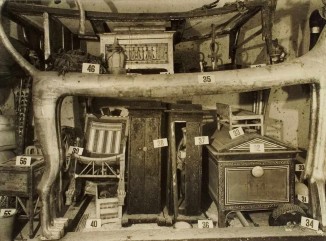
There were 5,398 items found in the tomb, including a solid gold coffin, face mask, thrones, archery bows, trumpets, a lotus chalice, two Imiut fetishes, gold toe stalls, furniture, food, wine, sandals, and fresh linen underwear. Howard Carter took 10 years to catalog the items.
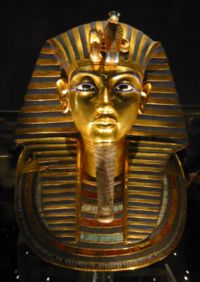
Tutankhamun ascended to the throne around the age of nine and reigned until his death around the age of nineteen. Historically, Tutankhamun is primarily known for restoring the traditional polytheistic ancient Egyptian religion, after its suppression by Akhenaten in favor of the Atenist religion. Also, Tutankhamun was one of the few kings worshipped as a deity during his lifetime; this was usually done posthumously for most pharaohs. (1923)
219 years ago, American US Navy Lt. Stephen Decatur led a successful raid into Tripoli harbor to burn the U.S.S. Philadelphia so the captured ship, which had fallen into pirate hands, could not be used against them during the First Barbary War.
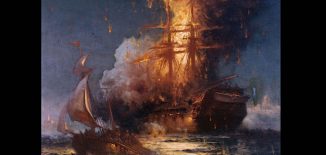 Together with a crew of 84 men, Decatur sailed into the harbor pretending to be lost and stormed the Philadelphia. They set it ablaze and fled, barely escaping being caught in the flames themselves. His spirited initiative made Decatur an instant hero and earned him a promotion to captain at age 25. The young officer would later go on to become one of America’s great naval heroes during the War of 1812. (1804)
Together with a crew of 84 men, Decatur sailed into the harbor pretending to be lost and stormed the Philadelphia. They set it ablaze and fled, barely escaping being caught in the flames themselves. His spirited initiative made Decatur an instant hero and earned him a promotion to captain at age 25. The young officer would later go on to become one of America’s great naval heroes during the War of 1812. (1804)
802 years ago today, Nichiren, perhaps the greatest Japanese Buddhist philosopher to ever live, was born. A reformer by legacy, Nichiren changed Buddhism in the country forever, and argued relentlessly for many kinds of teachings and alterations in the practice that are oddly reminiscent of European religious reformers like Martin Luther. Among these was the belief that the Tendai Lotus School should focus squarely on the Lotus Sutra, which he believed was the key to making profound Buddhist theory practical and actionable so an ordinary person could manifest Buddhahood within his or her own lifetime in the midst of day-to-day realities.
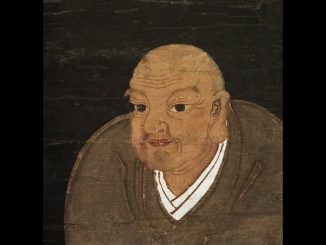
Nichiren was a prolific writer, and ferocious in oratorical debate. Famous for taking on all comers in the intellectual arena, he once wrote “whatever obstacles I may encounter, as long as men of wisdom do not prove my teachings to be false, I will never yield.” He denounced but also tried to correct the teachings of Pure Land Buddhism, which made him unpopular among nobles in the bakufu, or military dictatorship, who were its proponents.
Nichiren Buddhism’s teachings founded one of the most internationally widespread schools of Buddhism today, containing followers such as Orlando Bloom and Herbie Hancock, perhaps because it stresses the importance of a principle called immanence. Immanence states that Buddhahood, what the West refers to as Enlightenment, was attainable in this world, and that Enlightenment is found originally within all beings. Nichiren advanced this concept by declaring that it was actualizable rather than theoretical. Cause and effect were simultaneous instead of linear. (1222)
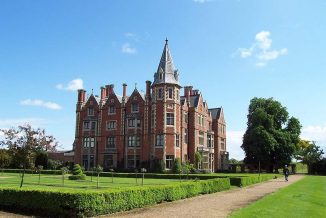
1424 years ago today, Pope Gregory the Great decreed that saying ‘God bless You’ should be the immediate response whenever someone sneezes, according to History.com.
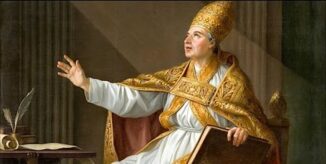
National Geographic reported it was during the plague when Pope Gregory I ordered “unceasing prayer for divine intercession,” commanding that anyone sneezing “be blessed immediately… since sneezing was often the first sign that someone was falling ill with the plague.”
Gregory I became pope in 590 and effected great changes in the Roman Catholic church. He used the office to govern and provide pastoral care to a large area during a time of little civil administration. He also reformed church liturgy, introducing the Gregorian chant. His writings about saints, including Saint Benedict, helped the growth of Benedictine monasteries in the Middle Ages. (600)

And, 19 years ago today, Musician Yusuf Islam, formerly Cat Stevens, was awarded substantial damages from The Sunday Times and The Sun, after they had printed articles alleging he was involved in terrorism. Both newspapers apologized for the “false and highly defamatory allegations,” and paid his legal bills. The 56-year-old musician gave the money to Tsunami relief projects. (2005)
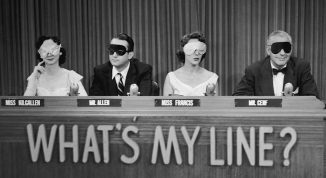
74 years ago today, the longest-running game show on prime-time, What’s My Line? debuted on CBS. The quiz show used celebrity panelists to question contestants in order to determine their occupation, i.e. ‘line’ of work. Top Hollywood celebrities of the day appeared also as “mystery guests” trying to stump the panelists who were blindfolded while asking questions.
The mystery guests would usually attempt to conceal their identities with disguised voices, much to the amusement of the studio audience. Over the years, they included Muhammad Ali, Julie Andrews, Louis Armstrong, Fred Astaire, Lucille Ball, Tony Bennett, Mel Brooks, Carol Burnett—and those are just the names starting with A or B.
Because the program, which won three Emmys and a Golden Globe, had celebrities in every episode, almost all of its recordings have been preserved by the renowned producers Mark Goodson and Bill Todman—and they were made available on YouTube. WATCH a clip with Jerry Lewis on the panel and Walt Disney as the mystery guest… (1950)
SHARE the Milestones, Memories, and Music…




















